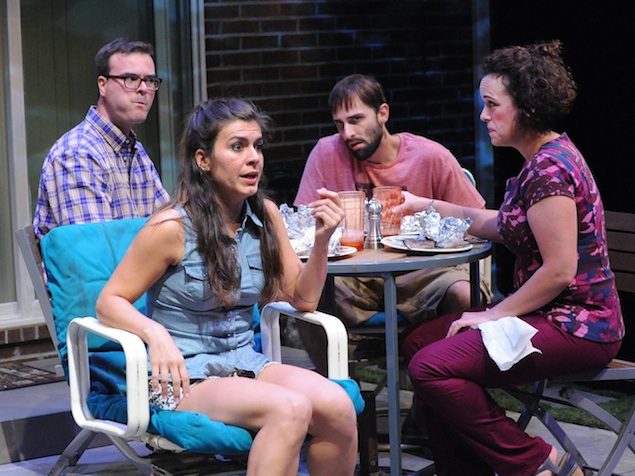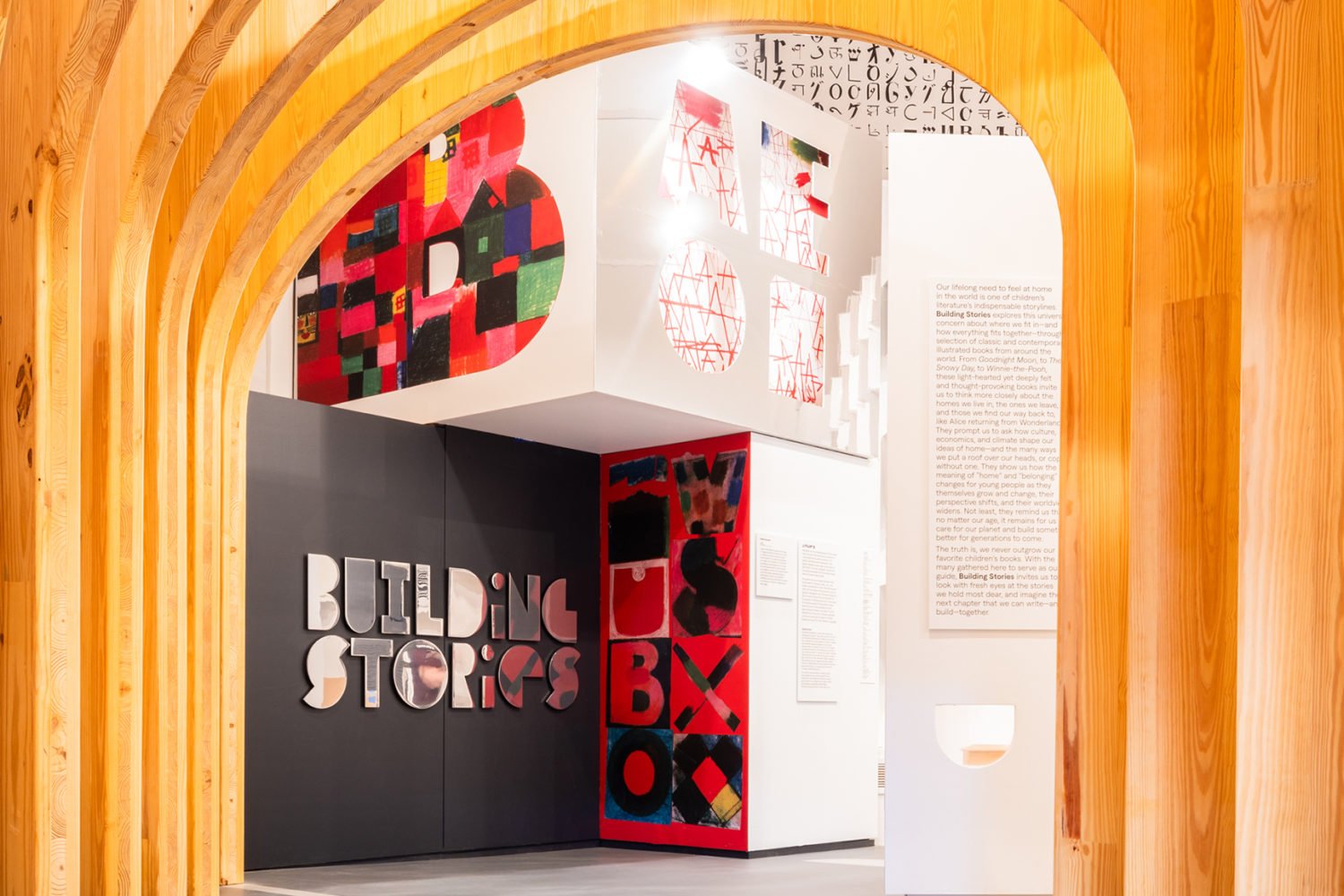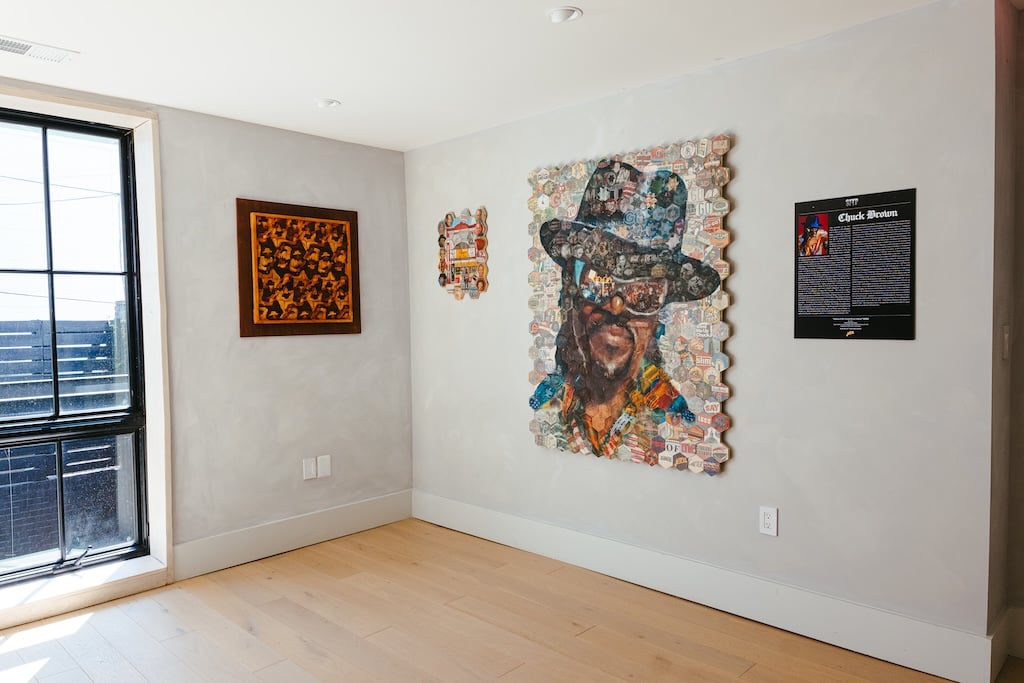
Detroit, currently playing in a riveting production at Woolly Mammoth Theatre Company, has
everything and nothing to do with the decimated city of the title. The two married
couples in D’Amour’s play live in a rundown suburb near an unnamed urban center. Though
they come from different generations and backgrounds, each couple teeters on the hairy
edge of a financial, social, and spiritual abyss. Oh, and the show’s a comedy, albeit
a scary one.
Under
John Vreeke’s pointedly revved-up staging, everyone and everything in the play looks and sounds
shell-shocked and desperate, and not only in the wake of the Great Recession. The
rootless young couple Sharon (Gabriela Fernandez-Coffey) and Kenny (Danny Gavigan) and their older, seemingly more settled neighbors Ben (Tim Getman) and Mary (Emily K. Townley) suffer just as acutely from two more “greats”—the Great Failure of Public Education
and the Great Coarsening of the Culture.
So, yes,
Detroit is a comedy, but a cataclysmic one, full of metaphors that in lesser hands would
be painful in their obviousness. At Woolly, with Vreeke guiding a terrific cast and
an ingenious design team, the play works as a simple, tragic farce, ignoring all metaphors.
But it also works, if you let it, as a morality tale of philosophic ambition and massive
symbolism about the destruction of the American middle class.
D’Amour often collaborates with artists from other disciplines on “devised” works
and “site-specific” pieces staged in non-theatrical places.
Detroit isn’t necessarily such a work, but the team at Woolly has taken D’Amour’s experimental
background to heart in the way they’ve mounted it.
Woolly is already a fairly intimate theater, but set designer
Tom Kamm has transformed the company’s space, dividing the audience into two sections that
face each other across a ground-level playing area. The two couples’ conjoined yards
are at the center of it. Ben and Mary have a well-kept patio with a nice gas grill
and a table and chairs, marred by a wonky umbrella that thwacks people. Sharon and
Kenny’s yard is a mess, their deck missing planks and ready to break ankles. At the
far end of each yard, like parentheses, stands the rear facade of each couple’s house.
Before the play begins, and during scene changes, evocative projections bathe the
facades in images of suburban life of yore (the video is designed by
Erik Pearson)—cheery, homogenous home movies of the 1950s and early 1960s, with dads mowing lawns,
kids playing, and neighbors being neighborly amid neat rows of cozy, cookie-cutter
houses. All this is strikingly accompanied by the crystalline strains of Bach’s Cello
Suite No. 4. Thus, even before it starts, the production immerses the audience in
its conflicted reality (owing also to the work of sound designer
Christopher Baine and lighting designer
Colin K. Bills). The idyllic projections and music seem to imply that the suburban life Hemingway
so famously loathed, and that the protesting youth of the late 1960s rejected, maybe
wasn’t so horrible after all, minus the segregation and conformity and all.
The lights come up on the two couples having a getting-to-know-you barbecue on Ben’s
and Mary’s patio. The mood is forcefully jovial, to the point of desperation, and
the actors play it in a stylistically cohesive way that is highly effective. We learn
that Ben has been unemployed for months and that he’s constructing a website to market
himself as a consultant. Sharon and Kenny both toil in blue-collar jobs.
The quartet forges an unlikely and doomed friendship, and the scenes tumble forth
with no intermission to slow the descent into bedlam. New and disturbing facts emerge:
Mary drinks a little; Ben may be depressed and delusional; Kenny and Sharon are stunningly
ignorant, haven’t a stick of furniture, and are former addicts. Neighborliness proves
a dangerous thing in
Detroit. The show’s climax proves that and then some, with the closest thing to 3D thrills
this reviewer has seen in smaller theater. A poignant denouement features
Michael Willis as a an older man remembering a happier suburban past.
Real estate moguls, bankers, community organizers, social workers, newlyweds, and
anyone I’ve left out should go to
Detroit to laugh, shiver, and most of all, to ponder.
Detroit
is at Woolly Mammoth Theatre Company through October 6. Running time is around two
hours, with no intermission. Tickets ($25 to $87.50) are available via Woolly’s website.















